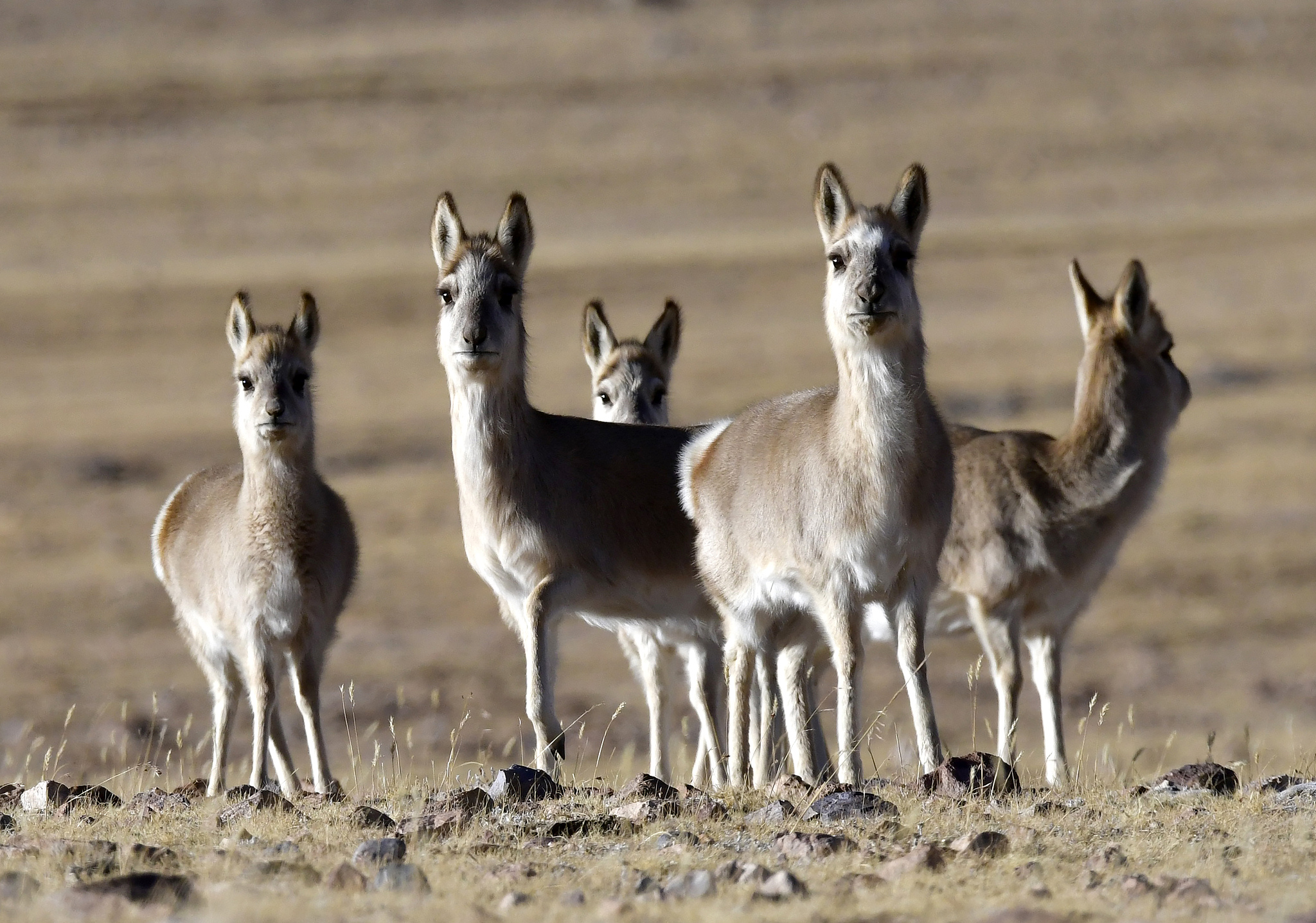
A Tibetan antelope is seen on a grassland of Nagqu City, southwest China's Xizang Autonomous Region, October 3, 2024. /CFP
Chinese scientists have successfully??assembled the chromosome-level genome of the rare Tibetan antelope,??aiming to decode the secrets behind the animal's survival at high??altitudes.
The Chinese Academy of Sciences (CAS) confirmed that??researchers from the Northwest Institute of Plateau Biology under the??CAS, and Qinghai University, both based in Xining, capital of Qinghai??Province in northwest China, have made the achievement, which is??currently the most accurate, complete genome of the species available.
The??Tibetan antelope plays a crucial role in biodiversity conservation on??the Qinghai-Xizang Plateau. "So, this achievement not only represents a??technical upgrade in the field of Tibetan antelope genetics research,??but also provides an important genetic foundation for the conservation??of plateau biodiversity," said Zhang Tongzuo, a researcher at the??institute.
Zhang explained that the in-depth analysis of the??Tibetan antelope genome will help predict its survival ability under??future climate change scenarios, enabling more effective conservation??measures to be implemented.
It will also help identify the??populations of the antelopes that require special protection in order to??maintain or increase genetic diversity.
"It is of utmost importance for preventing and controlling the spread of diseases in wild populations," he said.

Tibetan antelopes are seen on a grassland of Nagqu City, southwest China's Xizang Autonomous Region, December 5, 2024. /CFP
Additionally, the genome can be used to??study the relationships between different Tibetan antelope populations,??which are crucial for designing appropriate protected area boundaries??and planning cross-regional conservation efforts, according to Zhang.
Starting??from 2022, the joint research team have conducted extensive field??surveys and monitoring of the antelopes and assembled their??chromosome-level genome through the third-generation sequencing??technology.
The genome research of the Tibetan antelope also provides a fresh perspective on the conservation of plateau biodiversity.
From??a genetic perspective, the Tibetan antelope genome data fills an??important gap in the study of the subfamily Caprinae species, offering??valuable resources to understand how highland species cope with extreme??environmental pressures.
"Through comparative analysis of the??genomes of other Caprinae species, such as the bharal and domestic??sheep, we can trace the evolutionary history of the Tibetan antelope and??reveal how it has co-evolved with the highland environment over??millions of years," said Zhang.
"These findings not only deepen??our understanding of the species evolution mechanisms, but also provide??references for further exploration of the adaptability of other highland??species," he said.

A pack of Tibetan antelopes are on a??grassland in Haixi Mongol and Tibetan Autonomous Prefecture, northwest??China's Qinghai Province, October 28, 2024. /CFP
The Tibetan antelope, with its light tan??fur, grayish-white face and broad mouth, lives in Changtang National??Nature Reserve in the Xizang Autonomous Region, Hoh Xil National Nature??Reserve in Qinghai Province, and Altun Mountain National Nature Reserve??in the Xinjiang Uygur Autonomous Region, at altitudes ranging from 3,700??to 5,500 meters. The three regions are adjacent to one another.
The??fine underfur of Tibetan antelopes was so sought after that poaching in??the 1980s and 1990s threatened the future of the species. In 1995, the??population of the Tibetan antelope was reduced to around 50,000 to??75,000.
The number of Tibetan antelope in Xizang has now increased??to more than 300,000, and their protection status has been downgraded??from "endangered" to "near threatened," according to data from the??region's ecology and environment department.
Source(s): CGTN?